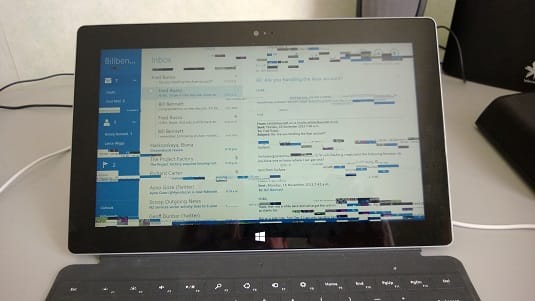Frustrations switching from OSX to Windows

On paper moving from Apple's ecosystem to Windows and Windows Phone looked straightforward.
There was always going to be some adjustment, but the last 36 hours have been filled with more obstacles than anticipated, particularly on the Surface 2.
Despite Microsoft's promise of a flexible device that could double as a laptop, the Surface 2 repeatedly crashes. Three major crashes in two days. During the last crash, the screen froze and became fragmented—a setback, just as I was beginning to find some productivity.
Not all the issues are Microsoft’s fault. My earlier move from Windows to Apple required minimal setup, whereas getting started on the Surface 2 involved troubleshooting and additional installations.
To add to the hurdles, handling email on Windows proved more cumbersome than expected. Windows 8’s Mail app on the Surface 2 works well, as does Windows Phone’s Mail app.
Things are less smooth on Windows 7, where I had to revert to using Gmail in Chrome. Although IMAP integration is straightforward on OS X and iOS, it was trickier here. Eventually, I ended up using Outlook 2013, which works but feels a bit like a step backward. Unlike OS X’s built-in Mail app, Outlook doesn’t natively support IMAP, making integration more complex.
Despite these annoyances, Outlook 2013 did offer some pleasant surprises. The new version has cleaner interface, and I enjoyed its integrated calendar, contacts, and even the social media links. Although desktop clients may seem outdated, Outlook 2013 impressed me enough that I may give the OS X version a fresh look after this experiment.
Microsoft Word also performs better on a full laptop than on the Surface 2, largely because of the Surface’s Touch Cover keyboard. While Microsoft deserves credit for keeping Windows stable without needing constant reboots, the frequent Internet Explorer 11 crashes are hard to overlook. These crashes interrupt cloud-based apps and have made working in a browser unnecessarily frustrating.
For now, the Surface 2’s potential remains just that—potential. There’s hope that with more time, or perhaps some updates, Windows will start to deliver the productivity I’d hoped for. But my first impressions have been rocky, making me question if this transition was worth the effort.
Member discussion